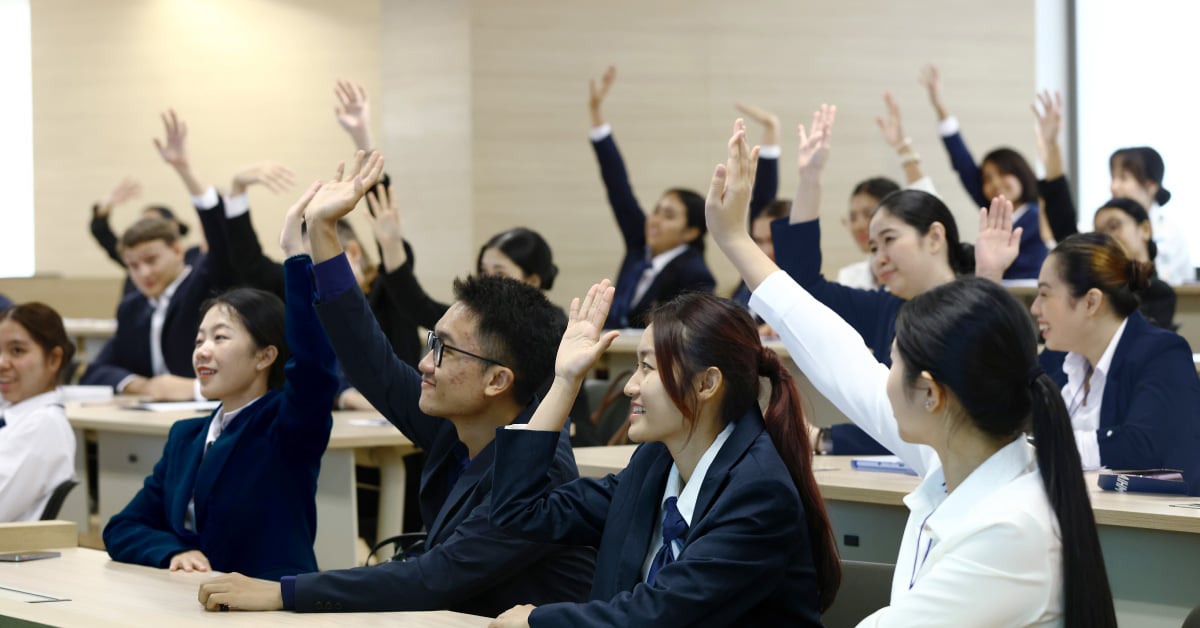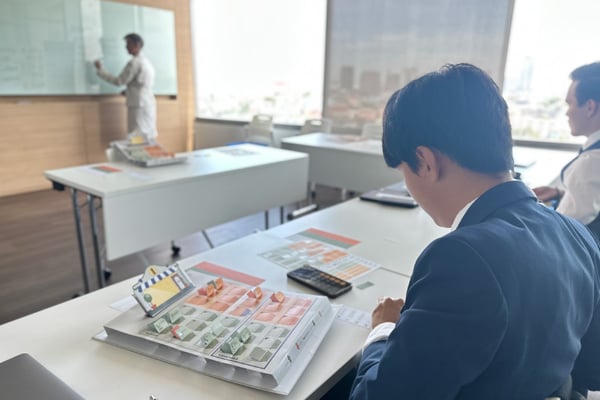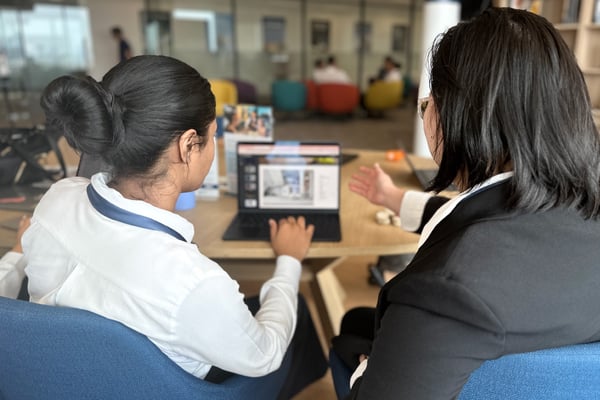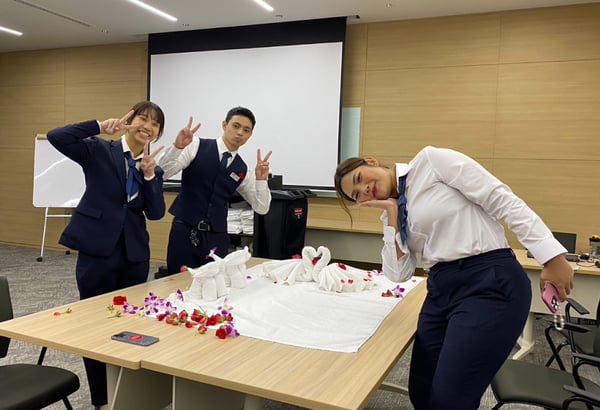A Teacher’s Toolbox: Active Learning Tactics for Higher Education

Think back to your school days, all the way to the beginning. Which classes were your favourites? When you recall the class activities that made you most excited, what comes to mind? Maybe you loved science classes with hands-on experiments—mixing chemicals in the laboratory to see what the reaction would be or dissecting frogs to discover how all the pieces fit together like a fantastically engineered machine.
Perhaps you loved art classes and the chance to get your hands dirty with paint and clay, to express your own creativity. Your top memories might be from music classes. Or playing with robotics kits. Possibly even building castles from blocks in kindergarten, or baking cakes in a home economics class in high school, creating electronic circuits in an academic course or an applied course in mechanics or engineering. You might have loved physical education classes and the chance to compete as a team or individual. What all these learning activities have in common is that they engage the learner. The moments of learning that stand out to us the most are often the ones where we took an active role in the learning process.

Especially, when reflecting on your primary school days, the learning moments you think of the most fondly might be the occasions you didn’t even realise you were learning. You were so immersed in the experience and the fun of it, you didn’t realise you were developing important life skills at the same time. As university-level instructors, we have the ability to create similarly engaging learning opportunities for our young adult students. That said, adapting the lessons of university-level courses with an active-learning approach can be challenging. To make things a little bit easier for you, I’d like to take the opportunity to share a toolbox of active learning activities ideal for a higher education environment.
The Power of Active Learning
In a recent post on active learning pedagogy for higher education, we dove into key features of active learning and strategies for incorporating active learning into teaching. We discussed how active learning scenarios embrace student engagement, critical thinking, problem-solving skills, collaboration, immediate feedback and the retention of lessons in ways that can be more readily applied to real-world contexts. We also looked at the high-level strategies instructors should employ when moving toward a more student-centred classroom.

These include:
- Creating a safe environment
- Encourage student ownership of the learning journey
- Leveraging asynchronous learning so class time can be used more effectively
- Interactive concept checks and quizzes
- Group work and collaborative learning
- Simulations and site visits
- Debates and perspective sharing
Today, I’d like to move from strategy to tactics. The toolbox below offers concrete ways to put active learning principles into practice for the benefit of your students’ learning.
How to Use this Active Learning Toolbox
Browse the variety of activities below for inspiration and use the tools creatively as you see fit. Many of these tools are ones I’ve used in one form or another in my own teaching practice. Others are tools successfully employed by colleagues. Some are high-potential tactics I’ve encountered during my own pedagogy studies over the years and stored in my toolbox for a day when they might be the perfect match.
You can find a wealth of information, research and practical examples of these tactics in academic databases and even a simple Google search. Just as your students utilise active learning scenarios to build their own knowledge and apply lessons to their own needs, you can explore, experiment and actively build your own pedagogical mastery through a similar approach. Have fun adapting these tools to your subject matter. Create new tools inspired by the ones you see here. Active learning pedagogy is a journey of discovery and continuous innovation. Over time you’ll develop your own ways to maximise learning outcomes by designing and facilitating active learning activities that excite your students, engage with topics more deeply and take advantage of your own individual strengths as a teacher.

Active Learning Activities for Higher Education (and Beyond)
Pedagogy researchers and active-learning educators have developed numerous activities and exercises to put student-centred learning principles into practice. Delve into the list below and adapt as needed to your own curriculum.
Think-Pair-Share
This popular tactic has three simple steps:
- Ask students to think about a question.
- Pair them with a partner to discuss their answers.
- Regroup as a class to share perspectives and explore together.

Think-Pair-Share has become one of the most frequently employed active learning tactics in education today—and for good reason. It’s simple to use. It’s an easy tactic to use to kick off the beginning of a lesson. Furthermore, it’s also a tactic you can use at any moment. Do you sense that students are starting to disengage or that you’re moving into territory where students might have a diversity of perspectives to share? Jump into a 15-minute Think-Pair-Share activity.
Flipped Classroom
In the traditional classroom, students learn information in class, often by passively watching a lecture, and then attempt to work with the information outside of class through homework. In the ‘flipped classroom’ teaching model, students review the foundational information before class, often through watching pre-recorded video lectures or readings. This frees class time up for activities that revolve around higher-order thinking. It also allows the instructor to facilitate this more complex engagement with the material, which can be a much more beneficial and fruitful use of both the instructor’s and students’ time.

Peer Teaching
Students take turns teaching a topic to their peers. This can be done as a casual in-class activity. Split the class into small teams. Assign a different subtopic to each team. Have teams research and discuss their topic and then teach it to the class a whole.
Peer teaching can also take the form of a more formal or rotating assignment. For example, if you assign articles to your students as daily reading assignments, you can create a schedule in which individual students (or pairs or teams) take turns leading the daily discussion or presenting a five-minute overview of the reading at the beginning of class.

Jigsaw Groups
This cooperative learning tactic is a form of peer teaching but takes place in small group settings. Break students into groups and have each student within the group responsible for one topic or responsibility. After team members complete their individual tasks, they come together to teach the rest of the team what they’ve learned or to put their piece of the puzzle together as a united front.
Problem-Based Learning
Problem-based learning or PBL challenges students to solve hypothetical or real scenarios through analysis and synthesis, strengthening critical thinking and collaboration skills.
Activities built upon problem-based learning may incorporate case studies or role-playing exercises.

Case Studies
Case-based learning tasks students with analysing real-world cases and is a great way to bridge theory and practice. Typically, the instructor will present the case or provide the case data to students and accompany it with several questions for the students to explore.
While text-based case studies can be extremely useful, research in pedagogy and cognitive psychology suggest that case studies presented with multimedia content such as video can be even better for learning outcomes. Including videos, photos, graphs, physical objects and other visual or multi-sensory content within the case studies is a great way to immerse students in the reality of the problem and enhance engagement.
Role-Playing Exercises
Not just for theatre students. Role playing and acting allow students to think through scenarios in real-time. In a hospitality management course, you might ask one student to be a hotel guest and one to be the duty manager. What is the customer’s issue? What customer service strategies will the manager employ? It’s up to the students’ own creativity and strategic thinking. And luckily, in a role-play scenario, mistakes have no real-world consequences and can be leveraged as a key facet of the learning process.

Interactive Quiz Technology
Online quiz applications and polling systems such as Quizlet and Kahoot keep students engaged with real-time assessments. They’re a fun way to foster learning through a spirit of competition. Many university-level students are already fans of these platforms, having encountered them during their high school studies.
Educational quiz technologies have proliferated in recent years and include both web-based platforms and applications students can download onto their phones. Depending on the software you choose and the parameters you set, students might compete in teams or as individuals.
Visual Thinking Activities
Visual thinking activities, such as concept mapping, get students to represent their knowledge of a topic graphically. Concept maps are useful for thinking about relationships, interconnections and hierarchies between aspects of a topic.
You might also ask students to come up with a visual metaphor. Combining this with peer teaching, you might split students into teams. In an advertising class, for example, you may assign each team a different print advertisement. Ask the team to come up with a visual metaphor or drawing to illustrate the strategy used by the headline. Teams can sketch the visuals on the board and use it to explain to the rest of the class the strategy they identified.
You can also get the creative juices flowing by providing modelling clay or other art supplies for students to create their visual representation. Are you teaching Leadership Studies? Give students clay and ask them to depict different leadership styles you’ve assigned them.

Service Learning
An important part of hospitality management training as well as various other fields, service learning immerses students in real-world environments. This hands-on experience serves as a vital bridge between classroom learning and real-world applications. Service learning allowing students to test what they’ve learned from theoretical examples and learn how to adapt and modify tactics to authentic situations.
Labs and Workshops
Whether a chemistry lab for a science degree or a culinary lab for a hospitality degree, settings for experimentation are a fundamental site for active learning. Physical movement and any activity in which students are literally using their hands to create, build and explore will boost students’ level of engagement with the subject matter.

Predictions
This easy tactic simply involves asking students to make a prediction about the facts of situation or the outcome of a problem before you present it to them. Ask them to support their thinking and explain how they arrived at their answer. Getting students to make predictions is a small but powerful way to make them invested in a topic. They’ll be eager to see how their predictions match or don’t match what actually unfolded.
Peer Assessment
The benefits of tasking students with evaluating the work of their peers and giving each other feedback are two-fold.
First, it encourages critical thinking and a deeper level of engagement with the topic. Evaluating a peer’s work allows a student to approach a task or topic with a sense of perspective that is hard to gain when examining your own work. By identifying the strengths and areas for improvement in a peer’s work, the student may also identify issues that are present in their own work or things to be cognizant of in the future. Of course, the student being evaluated benefits from the feedback as well.
Second, evaluating the work of others and giving feedback is vital component of many professional jobs. Practicing in a course setting with instructor oversight and guidance allows individuals to learn strategies for providing constructive and respectful feedback before they’re thrown into the deep end in the workforce.

Socratic Seminars
I’ve mentioned that active learning is a contemporary strategy replacing what we consider the traditional lecture-based learning that pops into most people’s minds when they think of a university classroom. In fact, the situation is more complicated. Socrates popularised a discussion-based form of learning revolving around open-ended questions centuries ago. Roundtable discussions reinvent and revive the Socratic approach. Best carried out in a circle or around a large table (if your classroom setup allows you to do so), Socratic Seminars invite students to participate in nuanced conversations in which they learn from multiple perspectives, lean into their curiosity and explore the complexity of a topic.

The Socratic Method is a collaborative approach, one which develops empathy for others and a sense of intellectual humility. Students realise their initial answer to a question isn’t the only answer and may only be a correct answer from a limited individual perspective.
Like many of the active learning tactics mentioned here, a class structured as Socratic-style seminar can be a lot of fun. The more excited and involved students are, the more they learn, the better they learn, and the more likely it is that the things they learn anchor themselves firmly within the student’s memory.
One-Minute Papers
At the end of an activity, such as a class discussion, ask students to jot down one important point they learned and will take away from it. Give them approximately one minute to do so. You might even incorporate this as a regular part of your teaching practice, for example, using it to conclude each class meeting. One-minute papers are an excellent way to foster self-reflection and self-assessment, solidifying key ideas for students and reinforcing their progress.
Gallery Walks
Transform your classroom into a temporary ‘gallery’ with posters, images or quotes taped around the room. Design an activity in which students browse the room and interact with the gallery. (Again, getting students up and moving is great for keeping them actively engaged.)
An example of how to incorporate a gallery walk: Print out key quotes from the reading assignment students completed before class and tape these sentences on the walls and other surfaces throughout the classroom. After giving students some time to browse and think about the quotes, ask them to find one that stands out to them and bring it back to their desk. Follow this with a task based on the chosen quote. A Think-Pair-Share activity is one good option among many possibilities.
 Photo credit: http://literaryvisuals.weebly.com/gallery-walk-engagement.html
Photo credit: http://literaryvisuals.weebly.com/gallery-walk-engagement.html
Cultivating a Transformative Teaching Practice
Like every instructor, my teaching practice has evolved over time. With each new year, I fine-tune the pedagogical techniques I use, learning what works most powerfully for my own students and makes best use of my own competencies and teaching personality. I encourage you to borrow from the toolbox above. Adapt these teaching tools. Combine them. Add new tools.
Instructional design is a constantly developing field. Stay close to the pulse of pedagogical advancement through continuing education, taking advantage of professional development opportunities and following resources like the AIHM Higher Blog. Lean into the power of an active-learning approach, and your students will reap the rewards, now and in the years to come.
What Does Hospitality Management Education Look Like Today?
Follow AIHM on social media to find out. Connect with the Asian Institute of Hospitality Management on LinkedIn, Facebook and Instagram.
AIHM’s instructors share their expertise, their industry insights and their thoughts on pedagogy. You’ll also encounter a wealth of posts about the student experience at AIHM, interviews with hospitality experts and special opportunities for prospective students. We look forward to connecting with you!


.png)